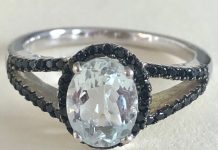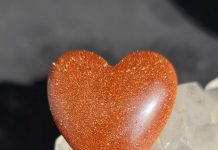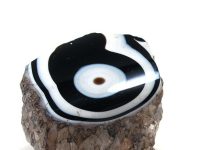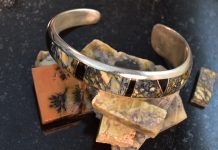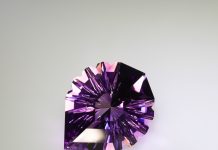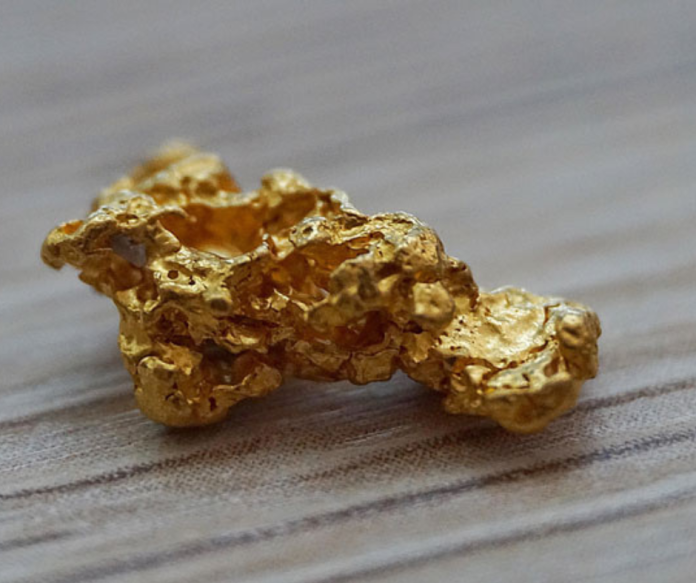
Fool’s gold is a primary concern when you’re panning for gold. Is that glitter in the pan genuine gold or fool’s gold? Although fool’s gold mimics gold, it’s not real gold. However, it can sometimes be a precursor to finding real gold. It’s also pretty, so it’s not necessarily bad to see pyrite even though it’s not very valuable monetarily. If you’ve ever dreamed of striking the mother lode but you’re not 100 percent sure what gold looks like in its natural state, this guide is for you.
What is Fool’s Gold?
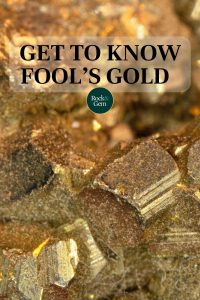
Fool’s gold is a mineral called pyrite, also called iron pyrite. Its name comes because it fools people into thinking they’ve found genuine gold.
“Pyrite is usually found in quartz veins, sedimentary rock, metaphoric rock even igneous rock. It has a very cubic form and a nice brassy luster, so it’s confused for gold a lot. There aren’t too many things out there that look like gold besides gold,” said Michael George, Assistant Chief of the Nonferrous and Precious Metals Group in the Mineral Commodities Section of the National Minerals Information Center of the U.S. Geological Survey.
George has been with the USGS (www. usgs.gov) for almost 20 years. He earned his bachelor’s degree in mineral economics from Penn State and his master’s degree from George Mason in geographic and cartographic science.
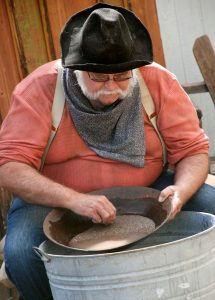 How Fool’s Gold Differs From Real Gold
How Fool’s Gold Differs From Real Gold
Looking at it from a scientific standpoint, fool’s gold and real gold aren’t alike at all.
“Chemically, pyrite is made up of the chemicals iron and sulfur where gold is its own element. Gold only has molecules of gold in it. Pyrite has one iron molecule for every two sulfur molecules. Their chemical compositions are completely different,” explained Cynthia Pridmore, a California Geological Survey (CGS) Senior Engineering Geologist.
Pridmore has spent 33 years with the CGS. Although most of her work has primarily been in earthquake hazards, because gold is California’s state mineral, she feels it’s something all employees should know about.
“Gold doesn’t really have a form, it’s pretty much an amorphic blob when it’s found in nature,” added George. “While pyrite usually has a cubic structure, it usually has flat edges on it. If you see something with flat edges and shiny, you’re pretty much guaranteed that it’s pyrite.”
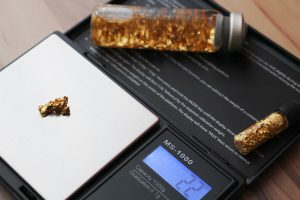
Simple Tests to Tell the Difference
There are several simple ways to tell the difference between fools’ gold and the real deal. One quick way to tell is if you bite it and it hurts, it’s not gold. However, this test isn’t recommended if you want to keep your teeth!
“This kind of goes back to when you’d watch old movies and you see the gold miner bite on the gold nugget and says, ‘Ah, that’s real gold,’ that’s because he’s denting it with his teeth,” she said. “The gold nugget is going to be soft enough that teeth will dent it. However, if you bite on too many rocks that aren’t gold, you’ll start wearing your teeth away.”
Hardness, however, is one of the easiest tests, but Pridmore has a better solution than the old bite test.
“If you take a metal probe or metal fingernail file or anything that has steel in it and you touch gold, it’ll deform. Kind of like a ball of aluminum foil kind of crushes,” said Pridmore. “Gold is malleable, it’s soft and it can dent easily. If you don’t want to dent it too much, you can dent it lightly and look at it with a hand lens to see the dent in it. The hardness is really important. Pyrite is brittle. You’ll either scratch it or you’ll chip off a piece of it.”
She said another easy way to tell the difference is in color. Pyrite is often described as brassy, but it has a bit of greenish color in it when compared side by side with gold. In the field, you can compare your find to a piece of gold you’ve already confirmed as genuine, like a wedding band.
Both Pridmore and George agree that shape is also a reliable way to tell the difference between fool’s gold and real gold. They both describe pyrite’s shape as cubic. George also describes the edges as straight, while Pridmore describes the crystals of the pyrite as usually being at right angles.
When asked about the most accurate ways to distinguish pyrite from gold, Pridmore suggested panning and George described a fun streak test.
“Gold is heavier than pyrite,” Pridmore said. “If you break the substances up into a fine material and pan it, you’ll see that the heavier mineral is what’s left behind. Pyrite isn’t that heavy, so it’d get flung out of the pan.”
George added that “in Geology 101, we’re taught what’s called the Streak Test. If you take a chunk of pyrite and rub it against a white unglazed porcelain tile, it’ll streak black. It’s very noticeable. But if you use gold, it’ll leave a light yellow streak. All you’re doing is transferring the gold onto the porcelain. It’s really easy to tell. This is a fun test. I used to go to elementary schools and do geology talks, and this was always a fun one to show them. You don’t expect it to happen.”

Other Minerals That Might Fool You
It’s not just pyrite that can fool a person.
“Besides pyrite, sometimes people mistake weathered mica for gold, which is a flaky mineral. But mica is only mistaken when it’s weathered because it’ll usually catch the sunlight. If you see it at a certain angle, it’ll catch the sunlight and reflect back maybe yellowish hue. However, once you get close to it, you’ll clearly note that it’s not gold. It just looks like a flake, like Formica,” said George.
While pyrite (fool’s gold) is the most common mineral mistaken for gold, chalcopyrite also appears and looks like gold, but it’s also brittle and not soft like gold. Weathered mica could look like gold, particularly when you’re panning.
“If you do see gold, you’ll see that little bit of grain in the bottom of the pan with the heavy dark minerals. But mica is sometimes in there, too, because it’s flat and it floats around,” said Pridmore. “Kids get really excited, especially if you’re at the river and you stir up the sand, and you see all those things twinkling at you, that’s mica. It can look like it’s flashing gold at you, but it’s not gold. It scratches very easily. If you take a little metal probe and scratch the mica, it’s brittle. It’ll scratch, but it’ll scratch in crumbs and break into powdery pieces. Whereas gold, if you poke it, it’s going to be soft and not break.”
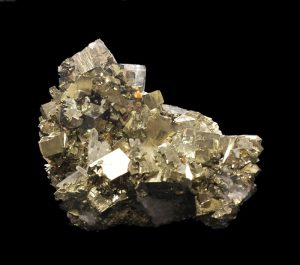
What’s Pyrite Worth?
Much of the information you find on pyrite declares the mineral relatively worthless. However, that doesn’t mean it’s not used for certain things that can give it some value.
“Back in the ancient times, it was a useful thing to find because it would spark so it was used a lot against steel to start fires. Now, not so much,” said George. “Domestically in the United States, we don’t use it for anything other than pretty rocks, which I guess is a useful thing,” he said. “You’ll often see it as an ornamental rock on somebody’s desk. I’ve got several pieces in my office. It does look nice and pretty.”
Elsewhere in the world, pyrite is used to produce sulfur dioxide to make sulfuric acid. Sometimes it’s used in the fertilizer industry.
Armed with these details on fool’s gold, you should be able tell if those shiny specks are truly gold that’ll put a little cha-ching in your wallet.
This story about fool’s gold appeared in Rock & Gem magazine. Click here to subscribe. Story by Moira McGhee.


